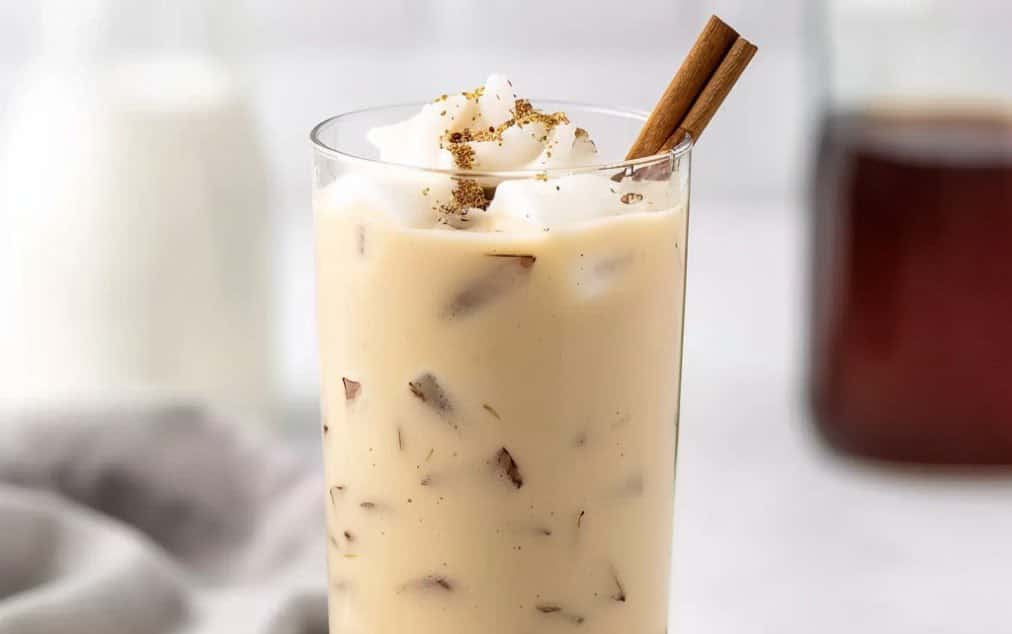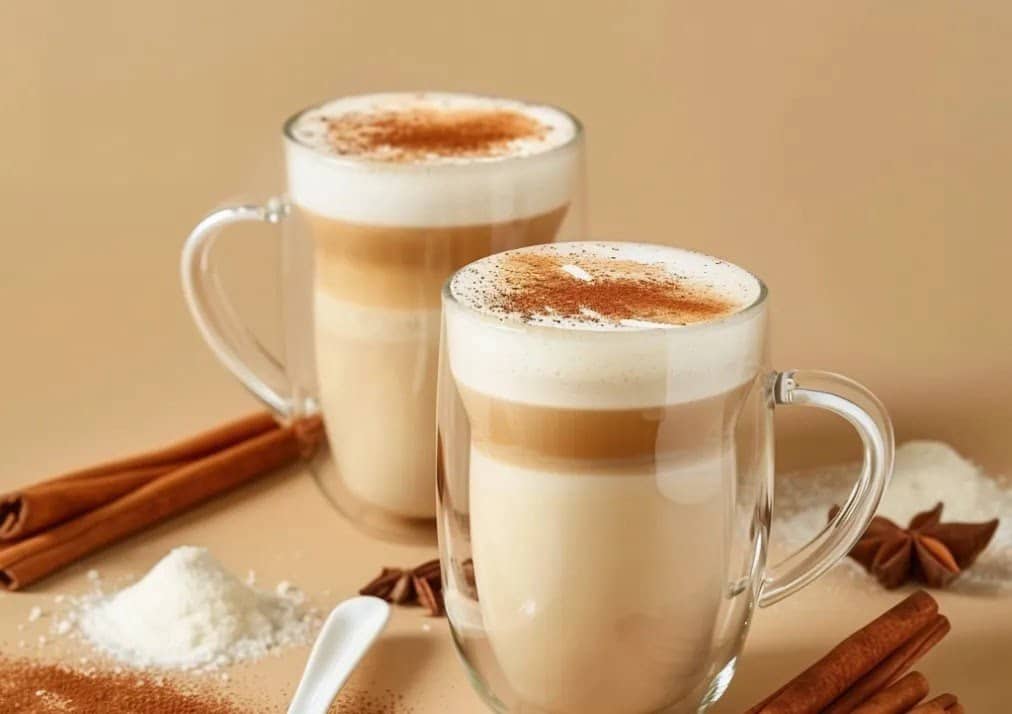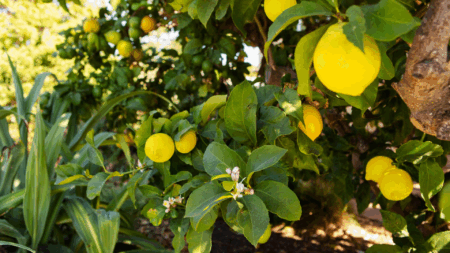Are you a chai latte enthusiast looking for delicious recipes to start your day right?
We agree that nothing beats a well-crafted chai latte’s comforting aroma and flavor.
In this blog post, we promise to share irresistible chai latte recipes that will tantalize your taste buds and give you the perfect morning boost.
From classic blends to creative twists, we’ll explore a variety of recipes to suit every preference.
We’ll guide you through the essential ingredients, share expert tips for achieving the perfect balance of spices, and provide clear instructions for each recipe.
Whether you prefer your latte hot or iced, these recipes will become your favorite for a satisfying and refreshing start to your day.
Let’s dive in and discover the wonderful world of chai lattes together!
The Basics of Chai Latte

A chai latte is a comforting and stimulating beverage that combines the robust flavors of black tea with a blend of aromatic spices and smooth, creamy milk.
This spiced milky tea offers a perfect balance of warmth and sweetness, making it a popular choice for tea lovers worldwide.
Chai latte has its roots in the Indian subcontinent, where ‘chai’ means ‘tea.’ Traditionally, chai is made by brewing black tea with a mixture of spices, often including cinnamon, cardamom, cloves, ginger, and black pepper.
In Western adaptations, chai has evolved into a ‘latte’ form, incorporating steamed milk and sweeteners to create a richer, creamier drink.
Core Ingredients of Chai Latte
- Tea: The foundation of a chai latte is a strong, full-bodied black tea, typically robust varieties like Assam. These teas provide a rich, malty flavor that complements the spices and stands up well when adding milk and sweeteners.
- Milk: Chai lattes are known for their creamy texture, achieved by adding steamed milk. Whole cow’s milk is the most common choice, but chai lattes can also be made with plant-based alternatives such as soy, almond, or oat milk for a dairy-free option.
- Spices: The signature flavor profile of a chai latte comes from a blend of warming spices. Cinnamon, cardamom, cloves, ginger, and black pepper are the most commonly used spices, each adding its unique aroma and taste to create a harmonious and comforting blend.
- Sweetener: Chai lattes are usually sweetened with sugar, honey, or flavored syrups to balance the boldness of the tea and spices. The sweetener enhances the flavor, rounding out the spices and creating a satisfying taste experience.
Simple Chai Latte Recipes
1. Classic Chai Latte Recipe

Ingredients Needed
- 2 cups water
- 2 black tea bags (or 2 tsp loose-leaf black tea)
- 1 cinnamon stick
- 2-3 cardamom pods, crushed
- 2-3 whole cloves
- 1/2 inch piece of fresh ginger, sliced
- 1 cup milk (dairy, soy, almond, or oat)
- Sweetener of choice (honey, sugar, or syrup)
Preparation Steps
- In a saucepan, bring water to a boil. Add tea bags (or loose-leaf tea), cinnamon sticks, crushed cardamom pods, cloves, and sliced ginger. Reduce heat and allow the mixture to simmer for 5 minutes, resulting in a strong tea infusion.
- Add milk to the saucepan and bring the mixture back to a simmer. Remove from heat and stir in your preferred sweetener to taste.
- Strain the chai latte through a fine-mesh sieve into a mug, ensuring all large spice pieces are removed.
- If desired, serve the chai latte hot, garnished with a sprinkle of ground cinnamon or grated nutmeg.
Tips for Best Results: Adjust the brewing time to suit your strength preference – a longer steeping time will result in a bolder flavor. For a vegan or dairy-free option, use plant-based milk alternatives like soy, almond, or oat milk.
Experiment with sweeteners such as honey, maple syrup, or agave nectar to find your preferred taste.
2. Dirty Chai Latte Recipe

Ingredients Needed
- 1 cup prepared Classic Chai Latte (from the recipe above)
- 1 shot of espresso or 1/4 cup of strong-brewed coffee
Preparation Steps
- Prepare the Classic Chai Latte according to the recipe above.
- Brew a shot of espresso or a small cup of strong coffee using your preferred method (espresso machine, French press, or pour-over).
- Pour the espresso or coffee into the prepared chai latte, stirring well to combine the flavors evenly.
- If desired, sweeten the Dirty Chai Latte with your sweetener and serve it hot.
Enhancements and Customizations: Strong brewed coffee works just as well in this recipe if you don’t have an espresso machine. For a milder caffeine kick, use decaf coffee instead.
To add an extra flavor dimension, consider stirring a small amount of vanilla or caramel syrup before serving.
Specialized Chai Latte Variations
3. Iced Chai Latte Recipe

Ingredients Needed
- 2 black tea bags (or 2 tsp loose-leaf black tea)
- 1 cinnamon stick
- 2-3 cardamom pods, crushed
- 2-3 whole cloves
- 1/2 inch piece of fresh ginger, sliced
- Sweetener of choice (honey, sugar, or syrup)
- 1 cup milk (dairy, almond, coconut, oat, or soy)
- Ice cubes
Preparation Steps
- Brew a strong chai tea by steeping the tea bags (or loose-leaf tea) with cinnamon sticks, crushed cardamom pods, cloves, and sliced ginger in 1 cup of boiling water for 7-10 minutes. The longer brewing time ensures a robust flavor that won’t be overly diluted by ice.
- Remove the tea bags and spices, then allow the tea to cool to room temperature. Once cooled, refrigerate the chai until it’s thoroughly chilled.
- Fill a tall glass with ice cubes, then pour the chilled chai over the ice. Add cold milk, leaving some room for sweetener.
- Stir in your preferred sweetener to taste, mixing well to ensure even distribution.
Serving Tips: For an extra refreshing twist, garnish your iced chai latte with a sprig of fresh mint or a slice of lemon.
These additions can brighten the flavors and add a cool, refreshing aroma to your drink.
4. Vegan Chai Latte Recipe

Ingredients Needed
- 2 cups water
- 2 black tea bags (or 2 tsp loose-leaf black tea)
- 1 cinnamon stick
- 2-3 cardamom pods, crushed
- 2-3 whole cloves
- 1/2 inch piece of fresh ginger, sliced
- 1 cup non-dairy milk (almond, coconut, oat, or soy)
- Vegan-friendly sweetener (agave syrup or maple syrup)
Preparation Steps
- In a saucepan, bring water to a boil. Add tea bags (or loose-leaf tea), cinnamon sticks, crushed cardamom pods, cloves, and sliced ginger. Reduce heat and allow the mixture to simmer for 5 minutes.
- While the tea is brewing, heat the non-dairy milk in a separate saucepan until it’s steaming. Avoid bringing it to a boil, as this can cause the milk to curdle or develop skin on the surface.
- Once the chai tea is ready, strain it into a mug and add the heated non-dairy milk. Stir in agave or maple syrup to taste, starting with a small amount and adjusting as needed.
- Serve the vegan chai latte hot. Use a milk frother or blend the latte in a high-speed blender before serving for a frothier texture.
Customization Tips: Experiment with different non-dairy kinds of milk to find your preferred flavor combination.
Almond milk offers a nutty undertone, coconut milk provides a tropical twist, oat milk lends a creamy texture, and soy milk creates a more traditional latte feel.
5. Low-Carb Chai Latte Recipe

Ingredients Needed
- 2 cups water
- 2 black tea bags (or 2 tsp loose-leaf black tea)
- 1 cinnamon stick
- 2-3 cardamom pods, crushed
- 2-3 whole cloves
- 1/2 inch piece of fresh ginger, sliced
- 1 cup unsweetened almond milk (or another low-carb milk alternative)
- Low-carb sweetener (stevia or erythritol)
Preparation Steps
- Brew a chai tea by boiling water and adding tea bags (or loose-leaf tea), cinnamon sticks, crushed cardamom pods, cloves, and sliced ginger. Allow the mixture to simmer for 5 minutes.
- Strain the chai tea into a mug, removing the tea bags and spices. To taste, stir in your chosen low-carb sweetener, such as stevia or erythritol. Start with a small amount and gradually increase until you reach your desired level of sweetness.
- Heat the unsweetened almond milk or another low-carb milk alternative until it’s steaming, then pour it into the mug with the sweetened chai tea.
- Mix the low-carb chai latte thoroughly to ensure the flavors are well combined. Serve hot, savoring the warming spices without the added carbohydrates.
Health Benefits: Opting for a low-carb chai latte can benefit those following a ketogenic or low-carb diet.
By reducing the intake of sugars and carbohydrates, this variation supports stable blood sugar levels and can aid in weight management.
The spices in chai, such as cinnamon and ginger, are also known for their potential anti-inflammatory and digestive benefits.
Customizing Your Chai Latte

1. Adjusting Spice Levels and Sweetness
Spice Levels
- Understanding Spice Impact: Each spice in a chai latte contributes a unique flavor and level of warmth. Cinnamon adds a sweet and woody note, cardamom provides a complex sweetness, cloves offer a sharp and intense flavor, and ginger brings a spicy heat. By adjusting the proportions of these spices, you can create a chai latte that suits your taste preferences.
- Tips for Adjustment: When customizing your chai latte spice blend, start with small amounts of each spice and gradually increase them until you find the perfect balance. A basic ratio to begin with is 2 parts cinnamon, 1 part cardamom, 1 part ginger, and 1/2 part cloves. However, feel free to deviate from this guideline based on your preferences. Be sure to taste your blend as you go, making adjustments until you achieve your desired flavor profile.
Sweetness
- Sweetener Options: You can use various sweeteners in your chai latte depending on your preferences and dietary needs. Traditional options include granulated sugar, honey, and maple syrup. Consider using natural sweeteners like stevia or erythritol for a healthier or low-calorie alternative.
- Adjusting Sweetness: Your chai latte’s sweetness should complement the spices’ intensity and the milk’s richness. Add a small amount of your chosen sweetener and taste the latte before adding more. Remember that some milk alternatives, such as coconut milk, may have a natural sweetness that can impact the overall flavor. Adjust the sweetener gradually until you find the perfect balance for your palate.
2. Choosing the Right Milk and Spices
Types of Milk
- Dairy and Non-Dairy Options: Chai lattes can be made with various milk options, both dairy and non-dairy. Traditional recipes often call for whole cow’s milk, which provides a rich and creamy texture. However, you can also use non-dairy alternatives like soy, almond, oat, or coconut milk to cater to dietary restrictions or personal preferences.
- Impact on Flavor and Texture: Each type of milk can alter the flavor and texture of your chai latte. Cow’s milk offers a classic, creamy taste, while soy milk provides a slightly nutty flavor. Almond milk lends a light and slightly sweet taste, oat milk contributes a smooth and naturally sweet profile, and coconut milk imparts a tropical richness. Consider how each milk type will complement the spices in your blend.
- Recommendations Based on Diet: For vegan chai latte lovers, soy milk, almond milk, oat milk, and coconut milk are all excellent dairy-free options. If you’re lactose-intolerant, these plant-based milks are also suitable alternatives. For those watching their calorie intake, unsweetened almond or oat milk can be a lower-calorie choice than whole cow’s milk or coconut milk.
Spice Selection
- Variety of Spices: While cinnamon, cardamom, cloves, and ginger are the most common spices found in chai blends, many other spices can be incorporated to create unique flavor profiles. Cardamom pods offer a sweet and complex aroma, while ginger root provides a spicy kick. Black peppercorns add subtle heat and depth, and star anise contributes a licorice-like flavor.
- Experimenting with Spices: Don’t be afraid to experiment with less traditional spices in your chai latte. Try adding a pinch of nutmeg for a warm, sweet, and slightly nutty taste or a dash of allspice for a combination of cinnamon, nutmeg, and clove flavors. When using whole spices, lightly crush them before adding them to your brew to release their essential oils and enhance the flavor. Ground spices can be used for convenience, but be aware that they may settle at the bottom of your cup and can create a slightly gritty texture.
Advanced Techniques and Tools

1. Using a Drip Coffee Maker or Keurig for Brewing Chai
Preparation with a Drip Coffee Maker
- Setup: When using a drip coffee maker to brew your chai, start by ensuring the machine is clean and free from any residual coffee flavors that could impact the taste of your latte. Place a clean filter in the basket as you would when brewing coffee.
- Chai Preparation: Place your desired number of tea bags or loose chai blends into the filter basket. If using loose tea, consider placing it in a disposable paper filter or a reusable mesh filter designed for loose tea.
- Water Ratio and Brewing: The ideal water-to-spice ratio may vary depending on the strength of your chai blend and personal preferences. A general guideline is to use 1 tea bag or 1 teaspoon of loose chai per 8 ounces of water. Adjust the ratio as needed to achieve your desired flavor intensity. Set your drip coffee maker to brew as usual, allowing the hot water to steep the chai ingredients in the filter basket.
Using a Keurig
- K-Cup or My K-Cup: Some brands offer pre-packaged chai latte K-cups that can be used directly in your Keurig machine. Alternatively, you can use a reusable My K-Cup filter and fill it with your loose chai blend. This allows you to customize the strength and flavor of your latte.
- Brewing Settings: When brewing chai in a Keurig, it’s essential to select the appropriate cup size to ensure the chai isn’t too diluted. Choose the smallest cup setting available on your machine, typically around 6 ounces. This will produce a more concentrated chai that you can combine with frothed milk for a perfectly balanced latte.
2. Frothing Milk at Home for a Creamy Texture
Techniques for Frothing Milk
- Manual Frothing: For a budget-friendly option, you can use a manual milk frother to achieve a creamy texture. Pump frothers manually pump a mesh screen up and down in a cup of heated milk, incorporating air and creating foam. Alternatively, you can use a small whisk to vigorously whisk the milk in a back-and-forth motion until it becomes frothy.
- Electric Frother: Electric milk frothers provide a convenient and consistent way to achieve silky, smooth-frothed milk. These devices typically have a heating element and a whisk attachment that spins rapidly to create foam. Pour your milk into the frother, select your desired temperature and frothing setting, and let the machine work its magic.
- Stovetop Methods: If you don’t have a frother, you can still achieve a creamy texture using stovetop methods. Heat your milk in a saucepan over medium heat, whisking constantly to create foam. Alternatively, pour the heated milk into a jar with a tight-fitting lid, secure the lid, and shake the jar vigorously for 30-60 seconds. The agitation will create foam, which you can pour over your chai concentrate.
Milk Types and Temperatures
- Choosing Milk: Different types of milk have varying frothing capabilities due to their protein and fat content. Whole cow’s milk produces the most stable and luxurious foam, while low-fat dairy creates a lighter, more airy froth. Non-dairy alternatives like soy, almond, and oat milk can also be frothed, but the results may vary depending on the brand and composition.
- Heating Milk: To achieve the best frothing results, it’s crucial to heat your milk to the optimal temperature range. For most milk types, this is between 140°F and 155°F (60°C to 68°C). Heating the milk beyond this range may result in scalding, which can negatively impact the flavor and texture of your latte. Use a thermometer to monitor the temperature, or heat the milk until it’s steaming and just beginning to form small bubbles around the edges of the pan.
Conclusion
You’ll soon discover your perfect cup by understanding the basics, trying simple recipes, and experimenting with variations.
Whether you prefer the classic blend, a dirty chai with an extra caffeine kick, or a vegan-friendly option, the key is to personalize your latte to suit your taste preferences.
Don’t be afraid to adjust spice levels, sweetness, and milk types until you find the combination that makes your taste buds sing.
With a little practice and the right tools, you’ll craft barista-quality chai lattes in your kitchen.
So go ahead and savor the warmth, the aroma, and the delightful flavors of your irresistible chai latte creations.
Your perfect cup awaits!




